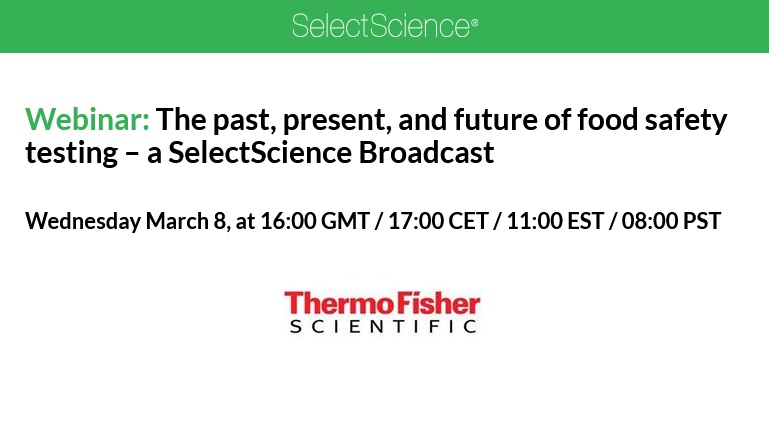The past, present, and future of food safety testing – a SelectScience Broadcast

SelectScience: The past, present, and future of food safety testing – a SelectScience Broadcast
Food analytical testing is essential for us all, but do you know why? And how can testing labs address current food safety challenges whilst anticipating future concerns?
Through some enlightening interviews with food testing scientists and industry experts, SelectScience®, in partnership with Thermo Fisher Scientific, explores the changes in approach to food safety testing over time, across a wealth of innovative content.
From the foundations of food testing to modern challenges and important technological advancements, we've collated an assortment of content for you in this free SelectScience® Broadcast, covering three key areas of concern: pesticides, mycotoxins, and food contact materials. Presented by SelectScience’s associate editor Cameron Smith-Craig, this broadcast is a first of its kind, in-depth analysis of the current food testing landscape.
Key themes explored:
- An introduction to food safety testing, including the regulatory authorities that legislate acceptable food standards
- The impact of modern challenges, such as climate change and population growth, on food supply chains
- The significance of new and unknown food contaminants and why they may be going undetected
- Advancements in technology, from sample preparation and separation to compound identification, and how these can support scientists
Who should attend?
- Food safety and agricultural authorities
- Import, export specialists, and food testing laboratories
- Food product manufacturers and contract testing labs
Presenter: Susanne Ekroth (Chemist, National Food Agency EU)
Susanne Ekroth is an analytical chemist at the Swedish National Food Agency. She graduated from Uppsala University and has been working at the Swedish National Food Agency for 27 years as a pesticide expert. During this time, she has developed skills in advanced technology, including GC-MS/MS, LC-MS/MS and LC-HRMS and is one of the founders of the multi residue method SweEt. Besides pesticides, she also works with food contact materials and toxins in water.
In recent years, Susanne has focused on HRMS techniques and the possibility to replace the LC-triple quadrupoles with LC-MS Orbitrap and simultaneously screen for new and unwanted compounds in food matrices. This work is presented as an application note and webinar as well as in Food Safety Magazine. Susanne is a member of the Scientific Organizing Committee for EPRW (European Pesticide Residue Workshop) and IUPAC (Pesticide Congress, Food Quality and Safety). She has given presentations about her work on the SweEt multiresidue method on several occasions, for example at the Nordic-, European- and Latin American Pesticide Residue Workshop, RAFA and Fresenius.
Climate change and adaptation have become one of the world's most important issues and have in recent years become increasingly integrated into the authorities' work. How it can affect lab work and the planning of the official controls are some of the issues that Susanne has been working on in recent years. Working with climate and vulnerability analyses and action plans is under governmental regulation, but it also enables us to be prepared for new substances and new types of food in our screening methods. This type of methodology is very familiar to the pesticide community and future adaptions should work very well. Susanne will present some of the upcoming needs due to climate change
Presenter: Professor Amadeo Rodríguez Fernández-Alba (Food and Environmental Specialist, Department of Agronomy, University of Almería)
Professor Amadeo Rodríguez Fernández-Alba, University of Almería, is a food and environmental specialist working with mass spectrometry.
Presenter: Cameron Smith (SelectScience)
Cameron studied Biomedical Science at the University of the West of England, UK, specializing in medical microbiology and oncology during his final year. As a member of the Editorial team, he now plays an integral role in shaping the content on SelectScience.